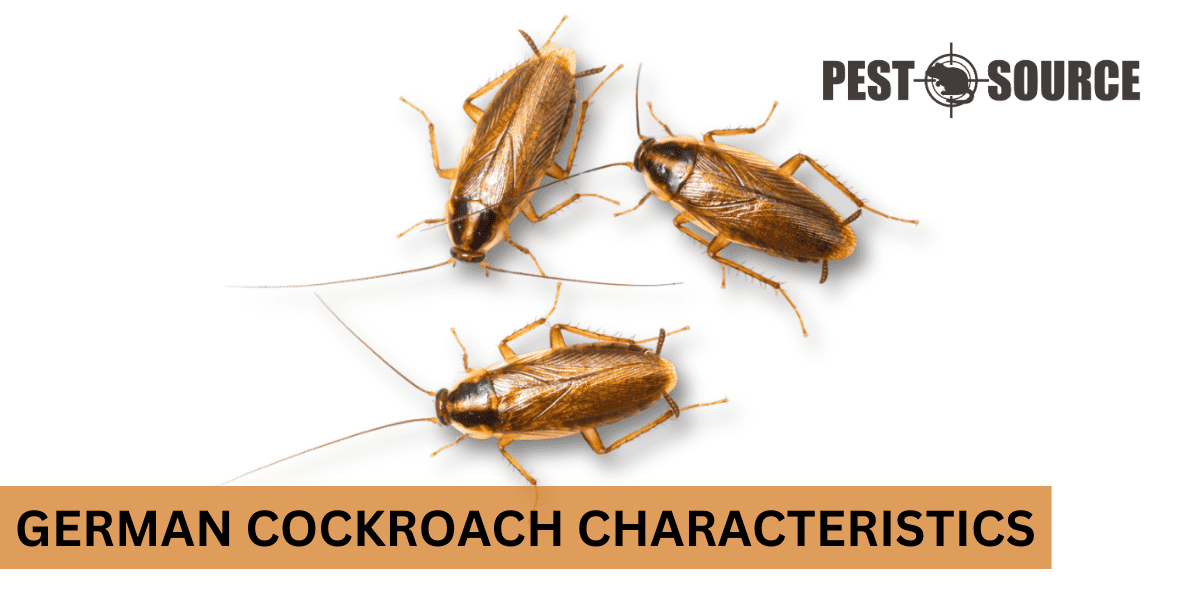German cockroaches are small, fast-breeding pests commonly found indoors. This piece offers insight into identifying and effectively controlling German cockroach infestations.
POINTS
- German cockroaches can be identified by their light brown to tan color, with two dark stripes on their back, and they prefer warm, humid environments close to food and water sources.
- Signs of a German cockroach infestation include droppings that look like pepper specks, egg cases (oothecae), shed skins, and a musty odor indicative of a large population.
- Effective control of German cockroaches involves sanitation, use of baits and traps, and professional pest control for severe infestations, with prevention focusing on sealing entry points and proper food storage.
- Health risks associated with German cockroaches include the spread of bacteria and pathogens that can cause food poisoning and allergies, as well as exacerbating asthma symptoms, particularly in children.
- Common myths about German cockroaches include the belief that they only infest dirty homes, can survive nuclear explosions, require harsh chemicals for eradication, and are harmless, all of which are false and can lead to ineffective pest control practices.
Identification and Physical Characteristics of German Cockroaches
German cockroaches are one of the most common pests found in homes and businesses worldwide. Correctly identifying these pests is the first step toward effective control. They belong to the scientific order Blattodea, family Blattellidae, and are scientifically named Blattella germanica.
Visual Identification

To visually identify German cockroaches, look for these distinct features:
- Size: Adults are typically about 1/2 to 5/8 inches long.
- Color: They have a light brown to tan coloring, with two dark, almost parallel stripes running from their head to the base of their wings.
- Wings: While they have wings, German cockroaches rarely fly and prefer to run.
Life Stages and Gender Variations
German cockroaches undergo a life cycle that includes three stages: egg, nymph, and adult. Nymphs resemble adults but are smaller, lack wings, and their coloration may vary as they molt and mature. Gender differences are subtle, but adult males tend to have a more tapered abdomen, while females have a rounder shape, especially when carrying eggs.
Common Confusions
It’s easy to confuse German cockroaches with other roach species, such as the American cockroach (Periplaneta americana), which is larger and reddish-brown. Careful attention to size, color, and behavior will help distinguish German cockroaches from their relatives.
Habitats, Behavior, and Signs of Infestation
Understanding the preferred habitats and behaviors of German cockroaches can alert you to their presence before an infestation becomes severe.
Typical Indoor Habitats
German cockroaches are drawn to warm, humid environments close to food and water sources. Commonly, they inhabit kitchens and bathrooms, hiding in cracks and crevices, behind appliances, and within cabinets.
Behavioral Patterns
These cockroaches are nocturnal, so they are most active at night when they forage for food and water. If you see them during the day, it may indicate a large population.
Evidence of Infestation
Signs of an infestation include:
- Droppings: Look for pepper-like specks on countertops or in drawers.
- Egg Cases: Oothecae, or egg cases, are tan and about 1/4 inch long, often found in secluded areas.
- Shed Skins: As nymphs grow, they molt several times, leaving behind their exoskeletons.
- Odor: A musty smell can be a sign of a significant infestation.
Spotting different life stages, especially numerous nymphs, suggests an established breeding population.
Control, Prevention, and Health Implications
Managing a German cockroach infestation promptly is crucial due to the health risks they pose.
Control Strategies
Effective control methods include:
- Sanitation: Reduce food and water availability by keeping areas clean and dry.
- Baits and Traps: Use baits to poison cockroaches and traps to monitor and reduce their numbers.
- Professional Pest Control: For severe infestations, professional exterminators can provide more comprehensive treatment options.
Prevention Tips
Preventive measures are key:
- Seal Entry Points: Close gaps around doors, windows, and pipes to prevent entry.
- Store Food Properly: Keep food in sealed containers and avoid leaving pet food out overnight.
- Regular Cleaning: Routine cleaning can remove potential food sources and discourage roach activity.
Health Risks
German cockroaches can spread bacteria and pathogens, leading to food poisoning and allergies. Their droppings and shed skins can exacerbate asthma, especially in children.
Mitigating these risks involves maintaining cleanliness and addressing infestations immediately. If you or your family members exhibit symptoms related to cockroach allergens, consult a healthcare professional.
Common Myths and Misconceptions About German Cockroaches
When dealing with German cockroaches, it’s essential to separate fact from fiction. Misinformation can lead to ineffective control methods and increased frustration. Let’s address some common myths and misconceptions about these persistent pests.
Myth: Cockroaches Only Infest Dirty Homes
While German cockroaches are attracted to unclean environments due to easy access to food and water, they can infest any home. Even the cleanest homes can become victim to an infestation if cockroaches are introduced through packages or secondhand appliances.
Myth: Cockroaches Can Survive a Nuclear Explosion
This myth exaggerates the cockroach’s resilience. While German cockroaches are known to withstand higher levels of radiation compared to humans, they would not survive a nuclear explosion. However, their ability to resist various pesticides can make them challenging to eradicate.
Myth: The Only Way to Get Rid of Cockroaches is with Harsh Chemicals
Many believe that the most effective way to eliminate German cockroaches is through the use of strong chemical pesticides. In reality, an integrated pest management approach that includes sanitation, traps, baits, and, when necessary, selective use of pesticides is often more effective and environmentally friendly.
Myth: Cockroaches Are Harmless
Some may underestimate the health risks associated with German cockroaches. As carriers of various pathogens, they can contaminate food and surfaces, leading to illnesses such as salmonella and E. coli infections. The allergens they produce can also cause respiratory issues.
Emphasizing Factual Knowledge
Understanding the truth about German cockroaches is crucial for effective prevention and management. By debunking these myths, homeowners can approach cockroach control with the right knowledge and tools, leading to more successful eradication efforts.
German Cockroach vs American Cockroach
In contrast to the German cockroach, the American cockroach presents a different set of characteristics. The American cockroach is one of the largest cockroach species, measuring about 1.5 inches in length, with a distinct reddish-brown color. Unlike the German cockroach, the American cockroach has the ability to fly short distances, although it primarily moves by running. It prefers warm, moist environments and is commonly found in less sanitary areas such as sewers and basements. While it can infest households, the American cockroach is less likely to be found in indoor residential spaces compared to the German cockroach. Its larger size and different habitat preferences distinguish it as a unique pest concern in various environments.



